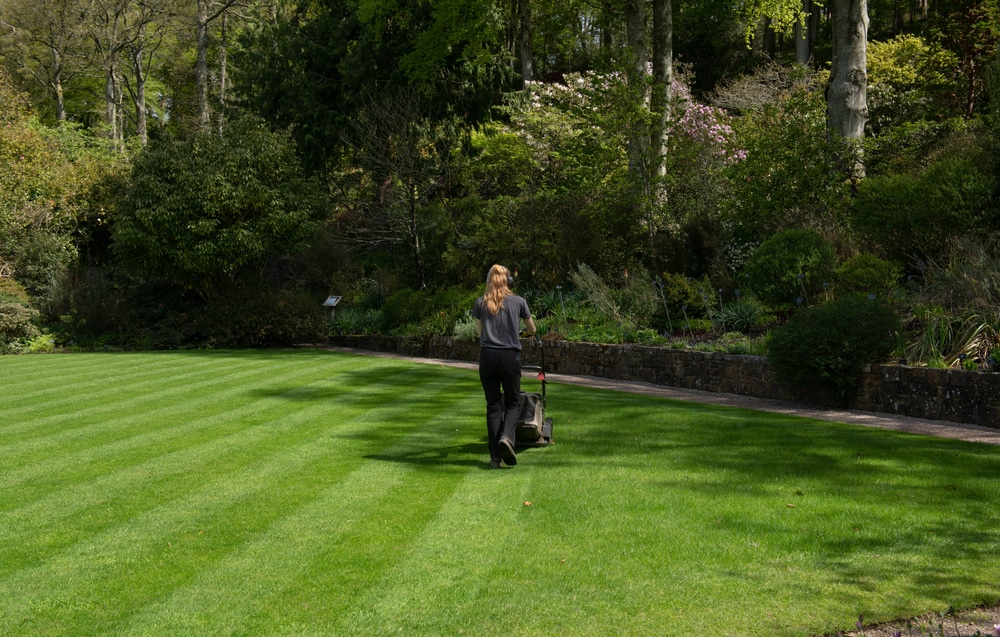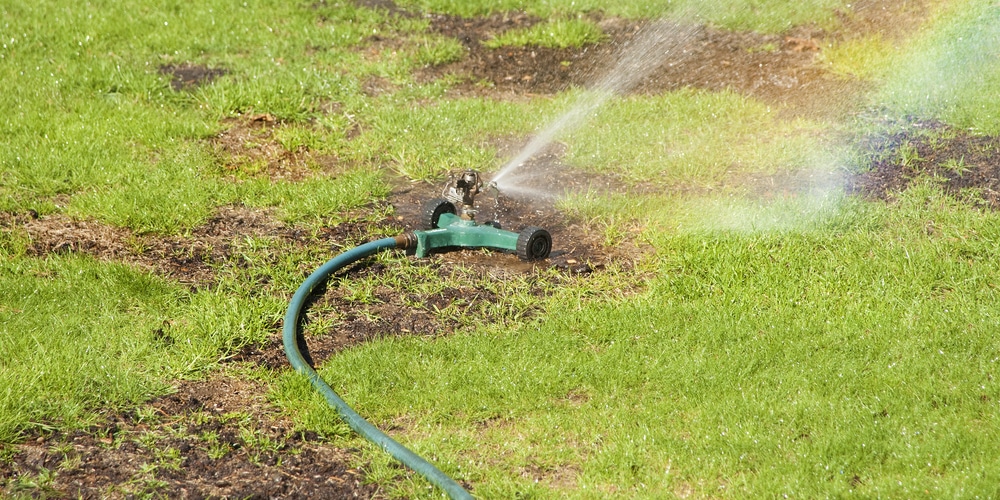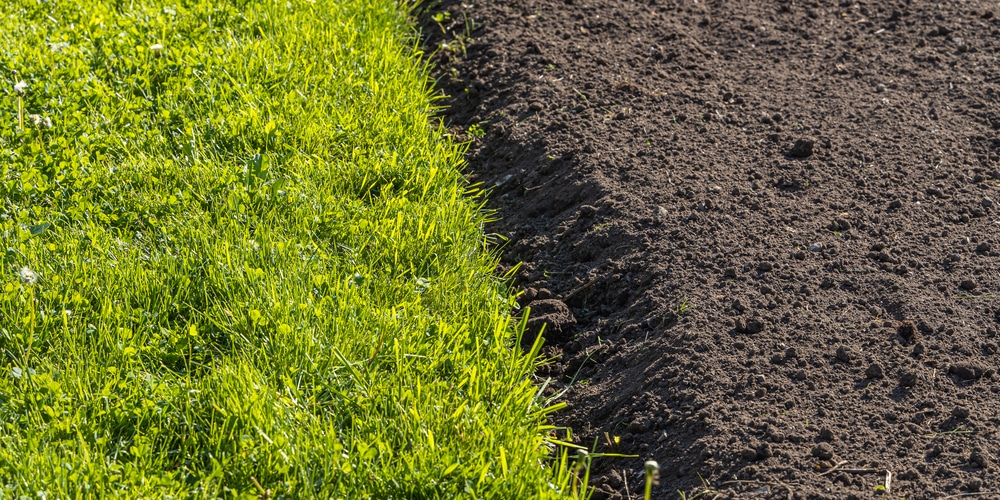Winning Grass Seed Varieties
When choosing grass seed, you’re selecting a long-term companion for your lawn. Different seeds cater to different needs, such as climate tolerance, maintenance levels, and aesthetic preferences.
Here are the key types to consider:
Cool-Season Grasses: Thrive in areas with cold winters and warm summers. They grow most vigorously during the spring and fall.
Notable varieties include:
- Kentucky Bluegrass: Renowned for its lush, fine texture and deep green color.
- Perennial Ryegrass: Known for its quick germination and durability, ideal for patching up damaged lawns.
- Fescue: Offers shades of deep green, with fine to medium leaf blades and great shade tolerance.
Warm-Season Grasses: Best suited for hot, sunny climates. They peak during the summer months.
Popular options are:
- Bermuda Grass: Provides a dense, hardy turf that can withstand heavy foot traffic.
- Zoysia Grass: Valued for its ability to resist drought and its lush, carpet-like appearance.
- Bahia Grass: Noted for being low-maintenance and drought-resistant.
Blended Seed Mixes: Sometimes, a single type of grass isn’t enough. For year-round color and resilience, blend two types like Bermuda grass with Ryegrass to cover all seasons effectively.
When you’re sifting through your options, pay attention to these variables:
- Shade vs. Sun: Choose shade-tolerant varieties for less sunny spaces.
- Soil Type: Some grasses, like the fescue varieties, are more adaptable to varying soil conditions.
- Traffic: For high-traffic areas, look for robust options like Bermuda Grass.
Design Principles for Lawn Patterns
Creating lawn patterns is an art that combines precision with creativity. Your lawn can be transformed into a living canvas with the right design principles, showcasing patterns that are both beautiful and practical.
Balancing Aesthetics and Functionality
- Visual Impact: Your pattern should create visual interest, guiding the eye and highlighting features such as flower beds or garden paths. Consider symmetry and geometry as tools for creating harmony.
- Practical Use: While aesthetics are important, your pattern must also allow for easy maintenance and functionality. Paths should be mowable, and patterns shouldn’t interfere with the health of your grass.
Seasonal Considerations for Grass Patterns
- Growth Rate: Patterns will change as seasons affect grass growth. You may need to adjust your cutting height and frequency to maintain the pattern.
- Weather Conditions: Be mindful of weather patterns. In dry seasons, certain patterns may help conserve water, while in wetter seasons, they may prevent waterlogging.
Grass Seeding Techniques
When designing your lawn, the correct grass seeding techniques are crucial for achieving a lush, even growth. Pay close attention to soil preparation, seed sowing, and post-seeding maintenance to ensure the best outcome for your lawn.
Soil Preparation for Seeding
- Test Soil pH: Aim for a pH between 6.0 and 7.0; amend the soil if necessary.
- Clear Debris: Remove rocks, sticks, and any other debris to provide a clean seedbed.
- Tillage: Loosen the soil to a depth of 2-3 inches to allow for good seed-to-soil contact.
- Leveling: Rake the area to create a level surface and eliminate any low spots where water could collect.
Seed Sowing Methods
- Hand Broadcasting: For small lawns, scattering by hand can be effective.
- Mechanical Spreader: Use a drop or broadcast spreader for even distribution over larger areas.
- Hydroseeding: This is a method where a mixture of seed, mulch, and fertilizers is sprayed over the area for quick germination and growth. More about hydroseeding.
- Localized Patching: Apply grass seed directly to bare patches, ensuring sufficient coverage.
Watering and Maintenance Post-Seeding
- Initial Watering: Keep the upper inch of soil consistently moist but not waterlogged.
- Frequency: Water lightly every day for the first 10-14 days until germination occurs. Read further about watering the seeds.
- Mowing: Begin mowing when the grass reaches 3 inches in height, taking care not to cut more than a third of the blade length at a time.
Creative Pattern Ideas for Lawns
Transforming your lawn into a vibrant tapestry of green can be a fulfilling endeavor. Using the right patterns, you can create an outdoor space that reflects your personal style and enhances the aesthetic appeal of your home.
Geometric Patterns
- Checkerboard: The classic checkerboard pattern, also known as the “chessboard,” can be accomplished by mowing your lawn in alternating directions. This creates contrasting light and dark squares that give your yard a manicured, formal look.
- Diamonds: To create diamonds, mow diagonally across your lawn, and then repeat the process from the opposite diagonal direction. Careful precision will render a series of crisscrossing lines forming diamond shapes across your turf.
To learn more about crafting a checkerboard pattern, visit the guide on How to Make Lawn Mowing Patterns.
Natural and Organic Designs
- Curved Lines: For a more natural look, use curved mowing paths to mimic the flow of a river or rolling hills. This can create a sense of movement in your garden.
- Randomized Patterns: To emulate the randomness of nature, vary your mowing patterns without any uniform shape or size. This can be particularly charming in a wildflower meadow or less formal garden setting.
For inspiration on integrating natural elements into your lawn design, explore these gorgeous lawn ideas.
Combining Different Grass Types
- Texture Contrast: Plant different types of grass seeds in distinct areas to create texture contrasts. Fine fescues mixed with broader-leafed Kentucky bluegrass can yield visually engaging results.
- Color Variation: Some grass varieties have unique colors, so planting contrasting shades next to each other can result in striking patterns. A deep green Kentucky bluegrass beside a paler perennial ryegrass can outline any pattern with color.
Discover techniques for using different grass types to produce professional patterns by reading about common lawn mowing patterns.
Overcoming Common Challenges
Creating a lush lawn with grass seed involves encountering and overcoming several challenges. Addressing these upfront can ensure a more even growth, reduce weed problems, and control soil erosion.
Dealing with Patchy Growth
- Identify the Cause: First, assess the factors contributing to patchy growth—which could be anything from poor soil conditions to incorrect watering practices.
- Improvement Tactics: Amend your soil with organic matter to improve texture and nutrients. Also, employ proper seeding techniques for the seed type you’re using, ensuring good soil-seed contact and appropriate watering.
Preventing Weed Encroachment
- Pre-Seeding Care: Begin with removing any existing weeds and consider applying a pre-emergent herbicide that won’t affect your grass seed.
- Maintenance Steps: Regular lawn care is essential, such as:
- Mowing at the recommended height.
- Fertilizing appropriately.
- Overseeding periodically to keep your lawn thick and competitive against weeds.
Soil Erosion Control
- Ground Assessment: Determine the erosion-prone areas. These are generally slopes or places with heavy water run-off.
- Mitigation Strategies:
- Utilize physical barriers like retaining walls or terracing.
- Plant grass types suited for erosion, like deep-rooted varieties that hold the soil together.
- Consider hydroseeding, which can quickly establish a root system to combat soil erosion issues.
Frequently Asked Questions
Before diving into specifics, note that correctly sowing grass seed requires attention to detail and proper timing to ensure a lush and even lawn.
What is the recommended method for sowing grass seed on an existing lawn?
To sow grass seed on an existing lawn, use a spreader for even distribution and follow the seeding rate on the package.
Rake lightly to help seeds contact the soil and water regularly without causing waterlogging.
How can one effectively sow grass seed on a patchy lawn to ensure uniform growth?
For a patchy lawn, overseed by spreading grass seed over existing grass, focusing more on bare areas.
Ensure good seed-to-soil contact and keep the area moist until the seeds germinate and establish.
What are the best practices for sowing grass seed by hand?
When sowing grass seed by hand, ensure you:
- Evenly scatter the seeds over the soil surface.
- Avoid clumping by not spreading too many seeds in one place.
- Gently rake the seeds into the soil.
- Water lightly and frequently to maintain soil moisture.
Is it possible to sow grass seed in the colder months, such as February, and if so, what special considerations should be taken?
Sowing grass seed in colder months like February is possible with considerations like:
- Use cold-tolerant grass seed varieties.
- Mulch with straw to protect seeds from freezing.
- Time sowing before a snowfall, as snow can provide insulation and moisture as it melts.
What steps are involved in creating a new lawn from an existing one to ensure successful seed germination and lawn development?
To create a new lawn, take the following steps:
- Remove all existing vegetation and debris.
- Loosen the soil and level it.
- Sow the grass seeds using a spreader at the recommended new lawn coverage rate.
- Rake gently, water adequately, and monitor for consistent moisture until germination.
How should I properly prepare my soil before sowing grass seed to optimize growth?
Proper soil preparation is crucial:
- Test the soil pH and adjust if necessary, aiming for a pH between 6.0 and 7.0.
- Till the soil to a depth of about 2-3 inches and remove debris.
- Apply a starter fertilizer and mix well with the soil to provide nutrients for the seedlings.
- Ensure the surface is even and firm but not compacted.
Last update on 2024-04-29 / Affiliate links / Images from Amazon Product Advertising API





